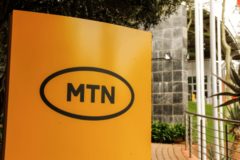Airtel launches 5G in Kenya, following Safaricom’s lead. 5G Wi-Fi was also introduced.
Airtel has become the second telco to launch 5G in Kenya after Safaricom rolled out the service in October 2022, following months of testing. Airtel, also Kenya’s second-largest network operator, announced the product at an event attended by multiple leaders in the ICT sector, including Kenya’s cabinet secretary for ICT, Eliud Owalo, and the director-general of the Communications Authority of Kenya (CA), Ezra Chiloba.
Airtel 5G will initially be available to a select number of customers as the carrier only has 370 5G sites spread across 16 counties. The operator did not specify which areas would be served. However, the service is expected to focus on customers in major areas and cities such as Nairobi, Nakuru, Mombasa, and Kisumu.
Ashish Malhotra, the managing director of Airtel Kenya, said, “Airtel 5G will revolutionise various sectors, such as smart cities, education, healthcare, Agri-tech, transport systems, entertainment, and more, shaping the future of Kenya.”
Airtel has also followed Safaricom’s lead by announcing the availability of 5G Wi-Fi. Safaricom introduced a similar product last year, enabling customers to purchase a 5G router and connect to the network in areas with 5G signals.
Airtel 5G Wi-Fi plans
Airtel will sell 5G-supported routers to interested customers at KES 10,000 ($72) and for businesses for free, whereas Safaricom charges KES 25,000 ($180) for the same device.
Airtel will offer 5G home broadband connections to residential houses and businesses. Plans start at KES 3,500 ($25) at 10Mbps. Customers needing higher speeds will pay more, with 30Mbps costing KES 5,500 ($40) and 50Mbps at KES 7,500 ($54). Airtel will also sell volume-based home data plans starting from KES 3000 ($22). These packages are also unlimited, making them appealing to customers needing high internet speeds.
Safaricom also offers the same product at KES 3500 ($25), KES 6000 ($43), and KES 15000 ($108) for 10Mbps, 40 Mbps, and 100Mbps, respectively. Unlike Airtel 5G Wi-Fi plans that are unlimited, Safaricom’s 5G broadband is limited to a given volume of data.
Airtel 5G bands and mobile plans
Airtel Kenya told TechCabal that its 5G connection is based on a sub-6 GHz frequency band. This refers to the frequency range below 6 GHz. It includes frequency bands such as 600 MHz, 700 MHz, 2.5 GHz, 3.5 GHz, and 4.9 GHz. Sub-6 GHz signals have relatively longer wavelengths, so they can travel longer distances and penetrate obstacles like buildings and walls more effectively. However, they generally offer slightly lower data speeds compared to mmWave.
mmWave operates at much higher frequencies, typically between 24 and 100 GHz. These high-frequency signals can provide fast data speeds, even reaching multi-gigabit-per-second rates. However, they have a limited range and are easily blocked by obstacles, including buildings and trees. Thus, mmWave 5G is primarily used in dense urban areas where high capacity and speed are needed.
For now, Airtel customers need 5G-capable devices to access the network. However, the carrier has not announced specific 5G plans. Airtel argues that customers will be moving in and out of 5G areas and will be well-served by 4G bundles, which can access 5G without issues. In contrast, Safaricom has introduced 5G-specific bundles, cheaper than other plans but can be used on both 4G and 5G networks.
Regulatory support
More players may join the 5G race in Kenya, with the next candidate being Telkom Kenya. However, the state-run entity has been facing financial difficulties, leading to the telco’s failure to pay the American Tower Corporation (ATC) KES 200 million for tower leasing. As a result, ATC switched off half of the towers, impacting millions of Telkom customers.
The presence of the Communications Authority of Kenya’s director-general, Ezra Chiloba, also indicates the regulator’s support for telcos as they transition to offering 5G services. The CA has not announced specific 5G spectrum fees but has chosen to bill telcos based on deployment and per-installed links. For example, if an operator installs 5G services in a particular area, they will pay fees for that specific area. The regulator will eventually establish a standard cost in the coming days.






















